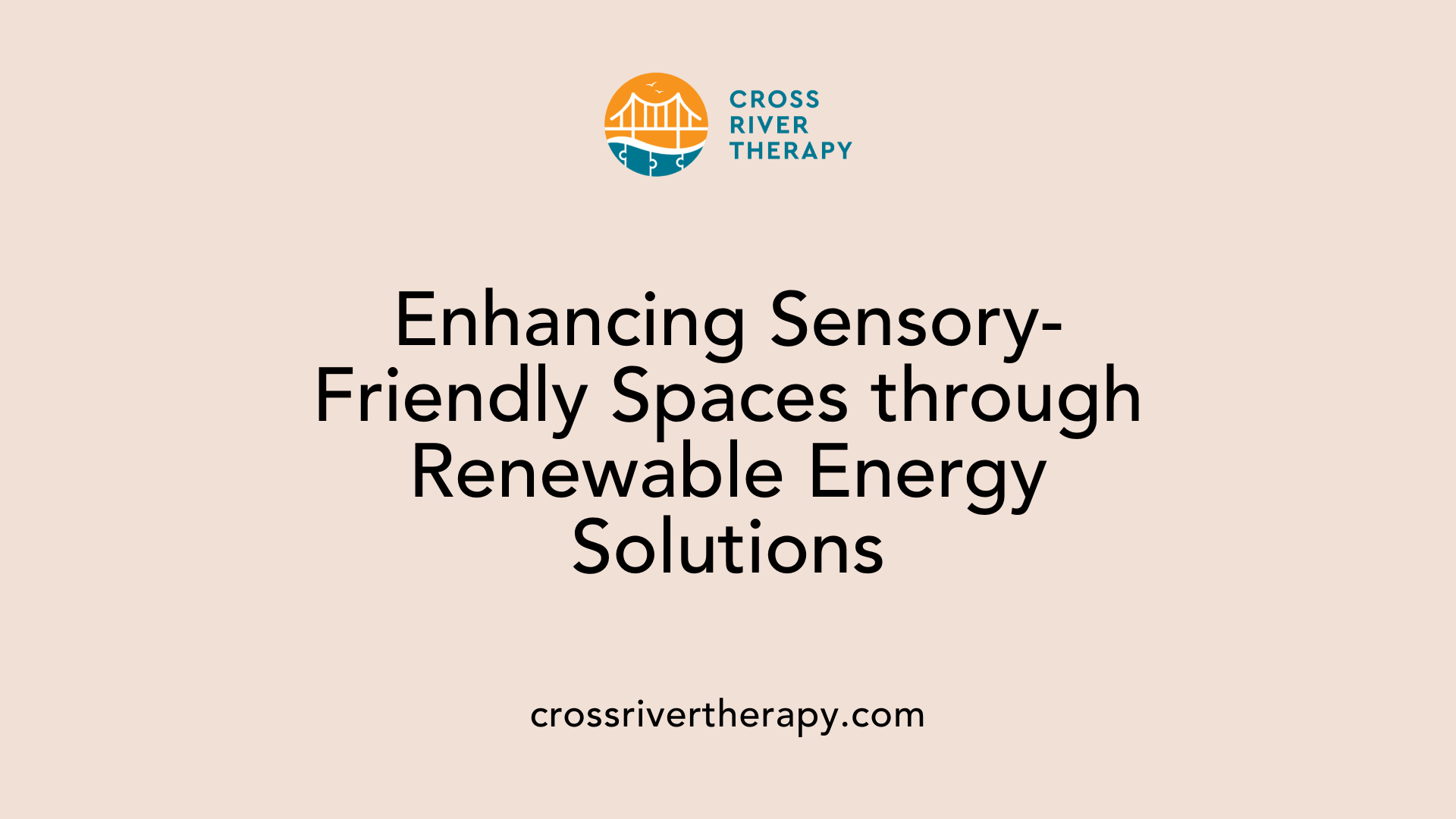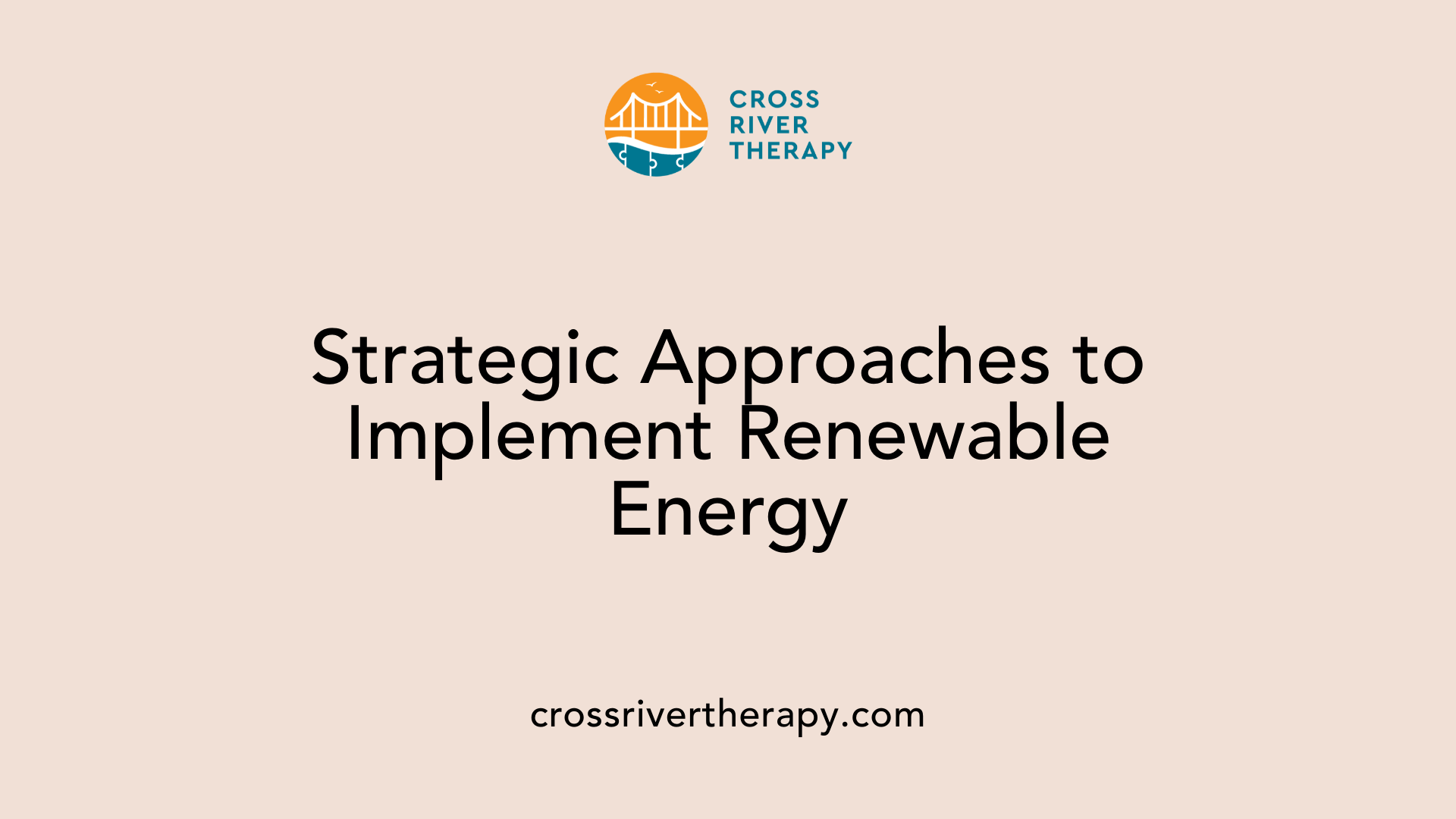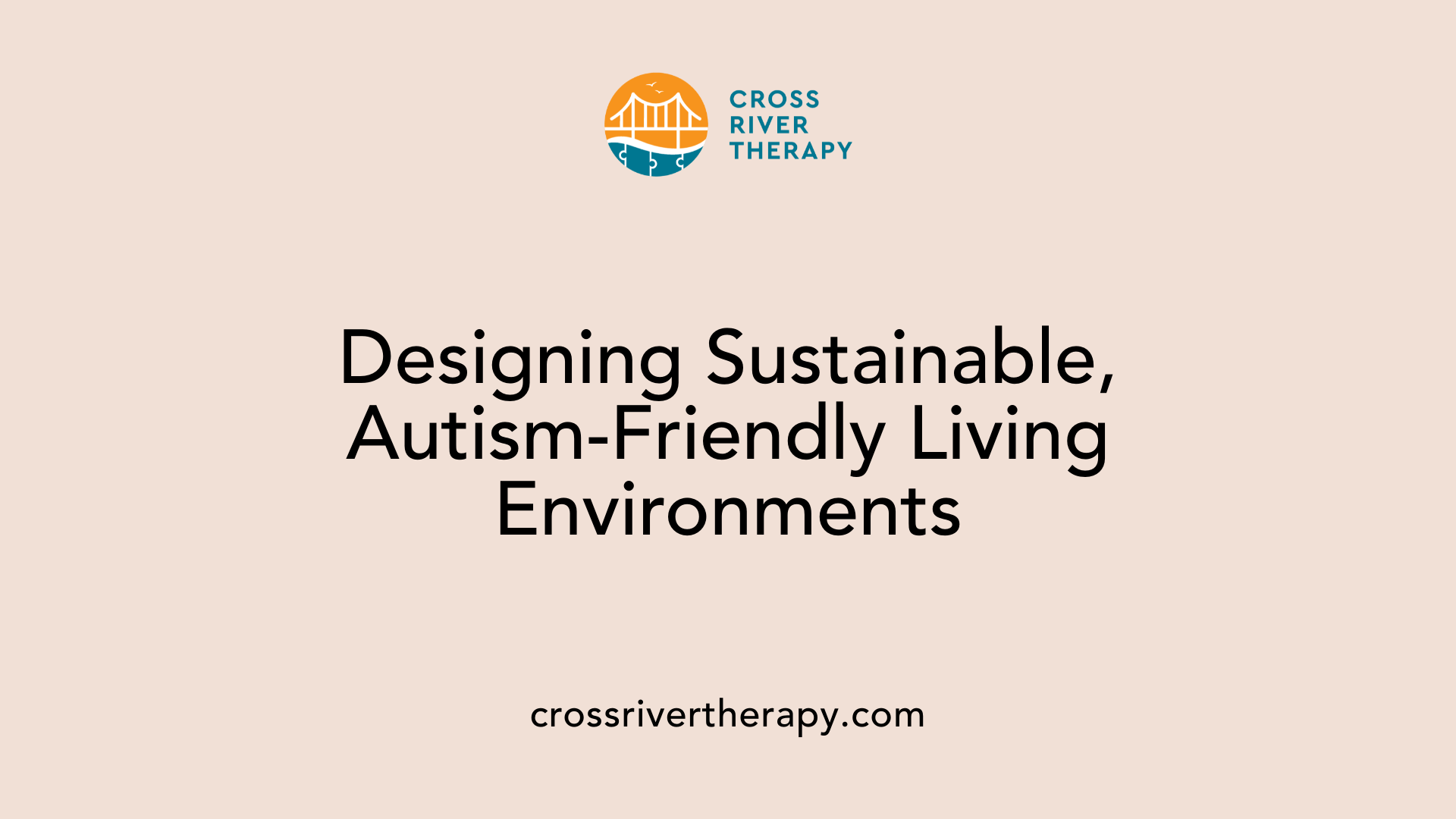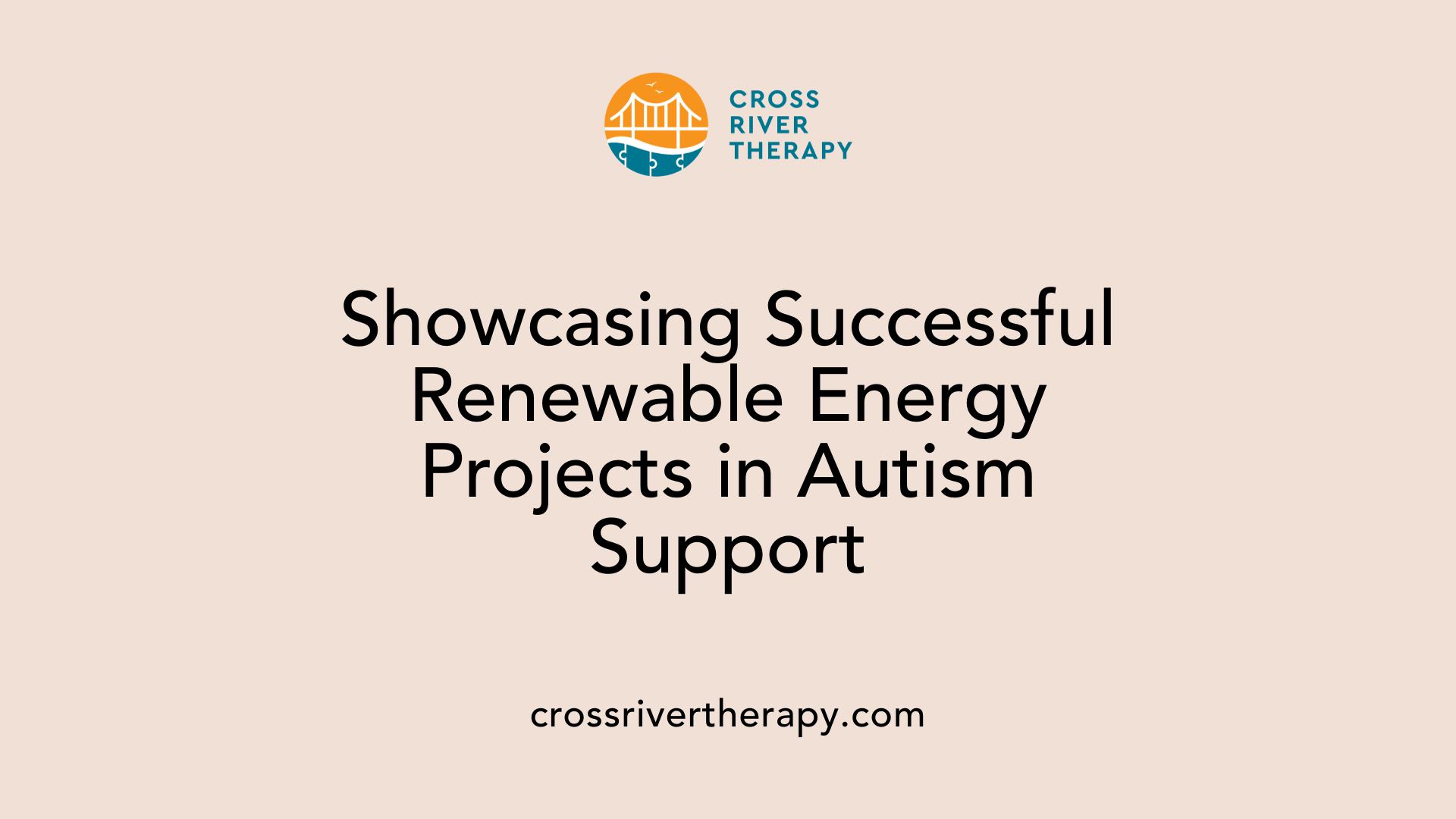Renewable energy in autism-friendly buildings
Harnessing Renewable Energy for Autism-Supportive Spaces
Introduction
In the evolving landscape of building design, a pronounced emphasis is being placed on creating environments tailored to the unique needs of individuals on the autism spectrum. Central to this evolution is the integration of renewable energy solutions, which promise not only environmental and economic gains but also personalized comfort and well-being. This article delves into how harnessing renewable energy can transform autism-friendly buildings into spaces that foster better living and educational experiences.
The Benefits of Renewable Energy in Autism-Friendly Environments

How renewable energy solutions enhance sensory-friendly environments
Integrating renewable energy solutions into autism-friendly buildings creates substantial benefits that cater to sensory needs. Cleaner sources of energy help reduce environmental pollutants, which are known to negatively impact health and cognitive function, especially for individuals on the autism spectrum. By fostering an environment with improved air quality, these buildings mitigate sensitivities to airborne toxins.
Moreover, renewable energy technologies allow for better control over indoor climate conditions. For example, smart thermostats can be customized to maintain comfortable temperatures, while energy-efficient systems, such as LED lighting, provide softer illumination to reduce glare and sensory overload. This thoughtful integration creates a calming space that is essential for individuals who may often feel overwhelmed by their surroundings.
Benefits for air quality and reducing sensory overload
The improvements in air quality achieved through renewable energy systems cannot be overstated. Research shows that exposure to pollutants can exacerbate symptoms linked to autism, making the transition to clean energy even more critical. Schools and community centers that utilize solar or wind energy experience not only cost savings but also healthier environments conducive to focus and learning.
In addition, implementing noise-reduction technologies, including sound-absorbing materials, enhances the indoor experience. By creating quieter spaces, these buildings provide refuge for individuals who are highly sensitive to sound, thus promoting overall well-being.
In summary, adopting renewable energy sources significantly enhances the quality of life for individuals on the autism spectrum by creating sensory-friendly environments that foster comfort, stability, and health.
Implementing Renewable Energy in Autism-Supportive Facilities

What strategies can be used to implement renewable energy in autism-supportive facilities?
To effectively implement renewable energy in autism-supportive facilities, a variety of strategies should be considered. First, leveraging solar energy systems is paramount. By installing solar panels, facilities can generate their own electricity, leading to substantial savings on utility costs, which can then be allocated toward crucial services and therapies for individuals with autism.
Wind energy systems also play an important role. These systems can provide a reliable and renewable energy source, especially in locations with favorable wind conditions. This not only boosts operational sustainability but also mitigates reliance on traditional energy sources.
In addition to solar and wind, geothermal energy can be integrated to offer consistent heating and cooling, creating a comfortable environment for autistic individuals. Smart technologies are essential here; they enable customized settings for lighting and temperature, helping to minimize sensory overload. Using energy-efficient appliances and implementing sound-absorbing materials can further enhance the peaceful atmosphere, fostering better mental health and well-being for those in these facilities.
| Strategy | Benefits | Impact on Autism Individuals |
|---|---|---|
| Solar Energy Systems | Significant electricity savings | Funds for essential services and therapies |
| Wind Energy Systems | Reliable, renewable power source | Increased operational sustainability |
| Geothermal Energy | Consistent heating/cooling | Enhanced comfort levels |
| Smart Technologies | Customizable lighting/temperature | Reduction of sensory overload |
| Energy-Efficient Appliances | Lower energy use | Improved mental well-being and comfort |
Innovatively integrating these energy solutions not only supports sustainability but also significantly enhances the living and learning environments within autism-supportive facilities.
Enhancing Quality of Life through Renewable Energy
What is the impact of renewable energy on the quality of life for individuals with autism?
Renewable energy can significantly improve the quality of life for individuals with autism in several ways. First, integrating renewable energy solutions leads to better indoor environments. Features like consistent temperatures and energy-efficient lighting help minimize sensory overload, a challenge often faced by those on the spectrum. Families who transition to clean energy sources, such as solar and wind, can experience substantial savings on their utility bills, providing much-needed financial relief as they manage expenses related to autism care.
Moreover, renewable energy enhances air quality by reducing pollutants commonly associated with traditional energy sources. This is particularly vital for individuals with autism, who may be more sensitive to environmental factors. Cleaner air contributes to better respiratory health, thus improving overall well-being.
In addition, renewable energy initiatives promote community involvement, fostering social ties among families affected by autism. This creates inclusive spaces where support and understanding thrive. Collectively, these improvements contribute to a healthier, sustainable environment that enhances well-being and independence for those on the autism spectrum.
Other Considerations
| Topic | Impact | Benefits |
|---|---|---|
| Indoor Environment | Improved comfort and stability | Reduced sensory overload |
| Economic Benefits | Lower utility costs | Financial relief |
| Community Involvement | Building strong support networks | Enhanced social ties |
Overall, the integration of renewable energy into autism-friendly environments sets the stage for a better quality of life for individuals and their families.
Educational Strategies for Renewable Energy in Autism Centers
Role of Natural Lighting and Energy-Efficient Systems
In autism educational settings, the use of renewable energy technologies, particularly solar panels and energy-efficient lighting, plays a crucial role in enhancing the learning environment. Natural lighting, a fundamental component of these systems, minimizes reliance on harsh fluorescent lights that can be disruptive for students with sensory sensitivities. For instance, incorporating large windows and skylights enables daylight to penetrate classrooms, promoting a calming atmosphere that is essential for students on the autism spectrum.
Energy-efficient systems such as LED lighting further contribute to creating softer illumination, which helps reduce glare, allowing for a more comfortable and focused learning experience. Additionally, adjustable smart thermostats maintain stable indoor climates, thereby preventing discomfort that can arise from temperature fluctuations. These adjustments are vital for ensuring that autistic individuals can learn in a stress-free environment.
Impact of Renewable Energy Education
Integrating renewable energy education into the curriculum can significantly influence students’ understanding of sustainability. By teaching eco-consciousness, educators encourage students to engage with and appreciate their surroundings. This process also empowers during discussions around environmental stewardship, providing autistic students with opportunities to explore real-world applications of renewable technologies.
The benefits extend beyond the classroom. Enhanced air quality achieved through renewable energy sources reduces exposure to pollutants, which is particularly beneficial for those with autism who may be sensitive to environmental factors. Overall, renewable energy initiatives not only improve the operational efficiency of autism centers but also create an enriching educational landscape that supports the mission of fostering learning, growth, and accessibility.
Economic and Environmental Benefits of Renewable Energy
What are the environmental and economic advantages of using renewable energy in autism-friendly buildings?
Renewable energy solutions provide crucial benefits in autism-friendly buildings, especially in the realms of environmental health and economic sustainability. By utilizing renewable sources like solar, wind, and geothermal energy, these buildings achieve remarkable reductions in energy costs.
For example, facilities like Hackensack University Medical Center have projected annual savings of approximately $1.06 million through renewable energy adoption. For individual families, this can mean cutting monthly electricity bills from $1,200 to $600, allowing families to allocate resources more effectively towards autism care and therapies.
Improved air quality and its impacts
Besides financial relief, renewable energy significantly enhances air quality. Cleaner energy sources reduce harmful emissions, including pollutants linked to respiratory and neurodevelopmental challenges. Improved air quality is paramount for individuals on the autism spectrum, who may have heightened sensitivities to environmental factors.
| Benefit | Renewable Energy Impact | Explanation |
|---|---|---|
| Cost Savings | 20-50% reduction in energy costs for facilities | Funds redirected to essential autism services |
| Better Air Quality | Reduction of harmful emissions | Supports overall health and cognitive function |
| Indoor Climate Control | Optimized technologies reduce sensory overload | Enhances comfort and reduces discomfort for residents |
Moreover, the integration of smart energy technologies not only fosters energy independence but also creates a more supportive, calming environment that caters to the sensory needs of individuals with autism. By embracing renewable energy solutions, we can simultaneously champion environmental health and economic stability, ultimately improving quality of life for neurodiverse communities.
Sustainable Design Practices for Autism-Friendly Homes

What insights exist into sustainable practices for homes and buildings catering to individuals with autism?
Sustainable design practices for autism-friendly homes hinge on creating environments with non-toxic materials and renewable energy systems that promote safer and healthier living spaces. The emphasis is on enhancing sensory quality through the design principles that cater specifically to the needs of individuals on the autism spectrum.
Key Design Features:
**- **Sensory Quality: Utilize soft color palettes and natural elements to create calming atmospheres.
- Acoustic Control: Implement effective sound-absorbing technologies, such as acoustic panels, to minimize noise disruption and improve focus.
- Smart Technology: Integrate sensors that allow for personalized adjustments in lighting and temperature, catering to individual sensory preferences.
- Universal Design: Ensure accessibility throughout by following principles that accommodate all levels of ability and promote independence.
Frameworks such as Autism ASPECTS™:
The Autism ASPECTS™ Design Index is an invaluable tool for architects and builders to develop spaces that meet both environmental sustainability goals and the specific sensory needs of those on the autism spectrum.
Additional Considerations:
- Sensory Zoning: Create designated quiet spaces with minimal sensory stimuli where individuals can retreat during overwhelming moments.
- Natural Lighting: Favor designs that incorporate natural light, reducing reliance on harsh artificial lights that may provoke discomfort.
Ultimately, the integration of these thoughtful design principles not only fosters an accommodating environment for individuals with autism but also champions sustainable living practices that benefit the wider community.
Technological Innovations Enhancing Autism-Friendly Spaces

Smart Home Technologies and Their Role
Smart home technologies are critical in creating environments that cater specifically to individuals on the autism spectrum. Systems like smart thermostats and LED lighting can be adjusted to suit individual sensory preferences, promoting comfort and reducing anxiety. For example, smart thermostats can maintain stable temperatures, while adjustable LED lighting minimizes glare, creating a softer, more comfortable atmosphere.
Adaptive Energy Systems for Individuals with Autism
Adaptive energy systems, such as renewable energy sources (solar, wind, geothermal), not only contribute to environmental sustainability but also serve the specific needs of autism-friendly spaces. These systems can significantly lower energy costs, enabling families to redirect savings towards essential supports like therapy and education.
Moreover, renewable energy solutions enhance indoor air quality by reducing harmful emissions. The combination of clean air and controlled sensory environments fosters healthier, more supportive living and learning spaces for individuals with autism.
Overall Improvements in Quality of Life
By integrating smart technologies and adaptive energy systems, autism-friendly designs not only enhance comfort but also improve overall quality of life. Such innovations create calming environments that help manage sensory overload, allowing individuals with autism to thrive.
Case Studies: Success Stories in Renewable Energy Integration

Examples of Facilities Benefiting from Renewable Energy
Several autism-friendly facilities have successfully integrated renewable energy systems, showcasing both environmental sustainability and enhanced living environments for individuals with autism. Notably, Hackensack University Medical Center projected an annual savings of approximately $1.06 million in utility costs post-adoption of renewable energy solutions. This not only bolstered financial efficiency but also created healthier indoor environments.
Autism support centers have also made strides by installing solar panels, which can reduce energy bills by 20-50%. By utilizing wind energy and geothermal systems, these facilities not only achieved energy independence but also improved air quality, crucial for their residents who are sensitive to pollutants.
Lessons Learned from Successful Implementations
Collaborative Community Projects: Community solar initiatives helped foster connections among families while minimizing energy costs, proving that collaboration can enhance sustainability.
Tailored Energy Solutions: The implementation of smart technologies, such as adjustable lighting and noise-reduction materials, has been essential in creating supportive environments for individuals with sensory sensitivities.
Monitoring and Management: Regular tracking of energy usage allowed facilities to optimize consumption and identify patterns, ultimately leading to reduced anxiety levels among residents by ensuring environmental stability.
Through these examples, it's clear that integrating renewable energy not only supports environmental goals but also significantly improves quality of life for autistic individuals and their families.
Community Engagement and Renewable Energy Projects
Community involvement in renewable energy
Community engagement plays a vital role in successful renewable energy projects. Families affected by autism can participate in local clean energy initiatives, fostering connections while promoting sustainability. Such projects often provide opportunities for families to collaborate on community solar initiatives, empowering them to take charge of their energy consumption and environmental impact.
Supporting local autism initiatives
Involvement in renewable energy projects also offers a platform to support autism initiatives. Many communities have established partnerships that not only aim to improve energy efficiency but also allocate funds to programs assisting those with autism. For instance, proceeds from community solar projects can help finance local autism-support services, ensuring that valuable resources are available to enhance the living experiences for neurodiverse individuals.
This dual approach not only improves environmental outcomes but also strengthens community resilience and provides concrete benefits to families impacted by autism.
Future Directions for Renewable Energy in Autism Support
Emerging Technologies
The future of renewable energy in autism support is bright, with continuous advancements in sustainable technologies. New innovations, such as enhanced solar panels and wind turbines, are becoming more efficient and accessible. Smart home technologies, like adaptive thermostats and energy management systems, are being developed to allow families to customize their living environments further. These technologies can help reduce sensory overload while ensuring comfort. Moreover, energy storage solutions are improving, enabling families and support centers to store and utilize energy more efficiently, decreasing reliance on the grid.
Long-term Sustainability Goals
Incorporating renewable energy into autism-friendly designs is not just a temporary measure but a long-term commitment to sustainability and well-being. The goal is to create Net-Zero Energy Buildings (NZEBs) that not only minimize energy consumption but also enhance the quality of life for individuals on the autism spectrum. Community initiatives, such as solar cooperatives, can foster connections among families while promoting eco-friendly practices. As awareness grows, the demand for autism-supportive environments equipped with clean energy solutions will likely lead to more sustainable development within this sector, ultimately benefitting both individuals and the environment.
Conclusion
As the demand for autism-friendly environments continues to rise, integrating renewable energy technologies presents a viable path towards creating sustainable, supportive spaces. These innovative solutions not only reduce environmental impact and costs but significantly enhance the quality of life for individuals on the autism spectrum. By adopting these practices, communities and institutions can secure a healthier, more robust future, ultimately extending the benefits of renewable energy beyond economic and environmental gains to profound impacts on well-being and social inclusion.
References
- Renewable Energy Strategies in Autism-Friendly Buildings
- Renewable Energy on Autism-Friendly Spaces - B Above Services
- Renewable Energy in Autism-Friendly Buildings - At-Home ABA ...
- Renewable energy for autism homes - Cross River Therapy
- Renewable Energy Solutions for Autism Homes - At-Home ABA ...
- Renewable Energy Supports Autism Communities - B Above Services
- Sustainable Energy for Autism Support Centers - Yellow Bus ABA
- How renewable energy helps autism households
- Eco-Friendly Energy for Autism Community Centers
- Eco-Friendly Energy For Autism Community Centers



